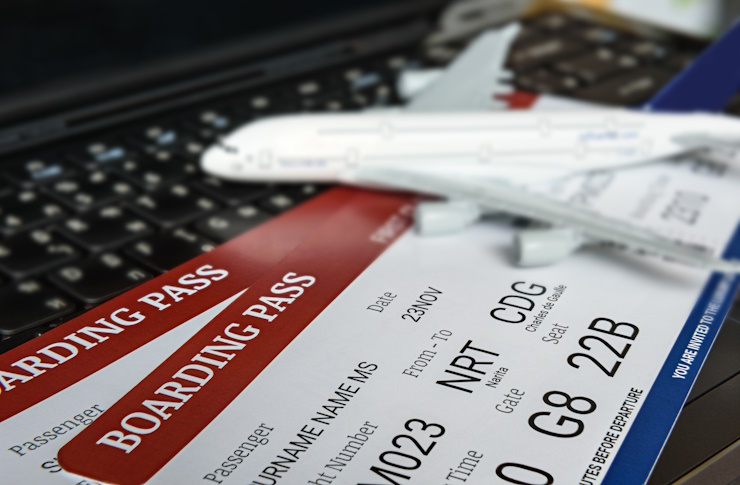Business Class Secrets: Upgrade Smarter, Pay Less
The world of business class travel often seems exclusive and financially out of reach for many travelers. However, behind the premium curtain lies a realm of strategies, timing techniques, and booking methods that can make luxury air travel more accessible than you might think. Understanding these approaches can transform how you experience long-haul flights without devastating your travel budget.

The allure of business class travel extends beyond the wider seats and enhanced legroom. It represents a comprehensive travel experience that begins at check-in and continues through priority boarding, superior in-flight amenities, gourmet dining options, and often chauffeur services at select destinations. While these premium offerings typically come with substantially higher price tags compared to economy tickets, savvy travelers have discovered methods to access these luxuries without paying the full premium price.
How to Find Discounted Business Class Tickets
Finding value in the premium travel market requires strategic timing and flexibility. Airlines frequently offer significant discounts on business class flights during specific periods, particularly during shoulder seasons when business travel naturally declines. Setting fare alerts through specialized flight search engines can notify you when business class prices drop on routes you’re interested in. Additionally, many carriers release unsold premium inventory at reduced rates approximately 2-3 weeks before departure dates, creating opportunities for flexible travelers to secure substantial savings.
Leveraging Airline Loyalty Programs Effectively
Airline loyalty programs represent one of the most reliable pathways to business class travel at reduced costs. Beyond the obvious strategy of accumulating miles through flights, savvy travelers maximize point collection through credit card sign-up bonuses, shopping portals, dining programs, and strategic partnerships between airlines and retailers. Understanding the sweet spots in redemption charts allows travelers to extract maximum value from their accumulated miles, sometimes achieving returns of over 5 cents per mile when redeeming for long-haul business class tickets compared to their cash value.
Bidding and Upgrade Strategies for Business Class
Many international carriers have implemented auction systems allowing economy passengers to bid for available business class seats. These systems typically open a few days before departure and allow passengers to propose their own upgrade price. Understanding the typical successful bid ranges can help travelers secure business class experiences at significant discounts. Additionally, some airlines offer last-minute upgrade opportunities at check-in or at the gate, which can represent substantial savings compared to purchasing business class tickets outright.
Booking Techniques to Fly Business Cheaply
Experienced premium travelers often employ advanced booking techniques to secure lower fares. This includes utilizing multi-city itineraries rather than simple round-trips, which can sometimes trigger lower premium cabin pricing. Another effective strategy involves searching for business class tickets from alternative nearby airports, as pricing can vary significantly between departure points even within the same metropolitan area. Additionally, exploring fifth-freedom routes—where airlines operate between two countries that aren’t their home base—often reveals surprisingly affordable business class options.
Seasonal Timing and Destination Selection
The timing of business class purchases significantly impacts pricing. Business travel follows predictable patterns, with lower demand during summer months, late December, and certain holiday periods when corporate travel decreases. Similarly, some destinations consistently offer better business class values than others, particularly on routes with high competition between multiple premium carriers. Routes between major financial hubs typically command the highest business class premiums, while secondary cities often present better value opportunities.
Business Class Fare Comparison by Airline
When considering business class travel, understanding the pricing structure and offerings across carriers can help identify the best value. Below is a comparison of business class offerings from major international carriers on comparable routes.
| Airline | Route Example | Average Business Fare | Key Premium Features |
|---|---|---|---|
| Qatar Airways | NYC to Bangkok | $3,200 - $4,500 | QSuite private cabins, dine-on-demand |
| Emirates | NYC to Dubai | $4,500 - $6,000 | Onboard lounge, chauffeur service |
| United Polaris | SFO to Tokyo | $3,800 - $5,200 | Lie-flat seats, Saks bedding |
| Singapore Airlines | LAX to Singapore | $4,200 - $5,800 | Book the Cook meal service |
| Air France | NYC to Paris | $2,800 - $4,200 | French cuisine, full-flat beds |
| Turkish Airlines | LAX to Istanbul | $2,600 - $3,800 | Flying Chef service, lounge access |
Prices, rates, or cost estimates mentioned in this article are based on the latest available information but may change over time. Independent research is advised before making financial decisions.
Fare Classes and Hidden Business Class Opportunities
Not all business class tickets are created equal, even within the same airline. Understanding fare classes is essential for finding hidden values. For example, airlines often offer “business lite” or similarly named fare categories that provide the business class seat and most onboard amenities but might exclude lounge access or have more restrictive change policies. These tickets can be 30-40% cheaper than full-fare business class while still delivering the core premium experience. Additionally, some airlines offer premium economy tickets that can be upgraded to business using miles at rates far more favorable than upgrading from standard economy.
Business class travel no longer needs to be an unattainable luxury reserved for corporate travelers with unlimited expense accounts. By combining strategic timing, loyalty program optimization, alternative routing, and understanding the premium fare landscape, travelers can experience the comfort and luxury of business class at significantly reduced costs. The key lies in flexibility, advance planning, and leveraging the various opportunities that airlines inadvertently create when managing their premium inventory. With these approaches, the front of the aircraft becomes increasingly accessible to travelers willing to invest time in understanding the system’s nuances.



